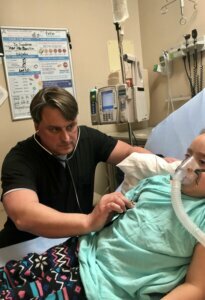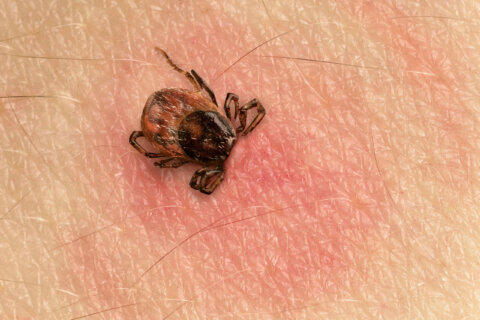Overnight temperatures in the D.C. area this week are expected to plunge into the 20s or even lower, which can be dangerous. In preparing for extreme winter weather, it’s best to know warning signs for hypothermia and frostbite, and to take those conditions seriously.
“It is something we have to pay attention to and be prepared for,” said Dr. Erik Schobitz, a pediatric emergency medicine physician with Adventist HealthCare Shady Grove Medical Center.
One of the things that makes hypothermia so dangerous is the way it can affect someone’s mind; they might not know that it’s happening and won’t able to do anything about it.
“They might seem confused with hypothermia, start slurring their speech and fumbling their hands,” Schobitz said.

Here are some hypothermia warning signs noted by Schobitz and the Centers for Disease Control and Prevention:
- Confusion
- Memory loss
- Fumbling hands
- Slurred speech
- Feeling drowsy or very tired
- Shivering
Schobitz said children might have an unusually low energy level and bright red, cold skin.
“If you see that, it’s time to take action. You just can’t let them stay out there anymore,” Schobitz said.
If a person’s temperature is below 95 degrees, get medical attention immediately. If no professional help is immediately available, get them someplace warm or at least out of the elements, take off wet clothes and warm the center of their body using an electric blanket if possible.
If the person is awake and alert, Schobitz said give them something warm to drink, but nothing with alcohol.
Find more information from the CDC here.
Cold conditions once again tonight, with lows dropping back into the teens and low 20s. Winds will be lighter compared to last night, but will still lead to wind chill values lower than the air temperature. pic.twitter.com/JbEc7hpA8B
— NWS DC/Baltimore (@NWS_BaltWash) January 21, 2020
Breezy northwest winds are ushering in wind chills in the teens and 20s for much of the area. Winds will lessen by this evening, with temperatures running 5-10°F below normal for the middle of January. Latest: https://t.co/5RyZgoXicj pic.twitter.com/SlTBa2sHjh
— NWS DC/Baltimore (@NWS_BaltWash) January 20, 2020
Beware of frostbite
Frostbite usually impacts toes, fingers, feet, your nose or ears.
“It literally is that they freeze,” Schobitz said.
The first sign frostbite might be settling in is pain. Skin will hurt, or be very red. Here are several frostbite signs to look for:
- Pain
- Skin that’s white or grayish-yellow
- Skin that feels unusually firm or waxy
- Numbness
What do you do about frostbite? If getting immediate medical care isn’t possible, get the person someplace warm.
“If you’re out in the cold and your hands are feeling like this, get into shelter first but get them under your arms, into your armpits,” Schobitz said.
Soak in warm — not hot — water.
What shouldn’t you do if you might have frostbite? Don’t walk on frostbitten feet or toes, and don’t rub the area that may be affected. Also, don’t warm up using a stove, fireplace or radiator.
“Because you’re not feeling this tissue — because it’s been frozen and you could burn it without realizing it,” Schobitz said.
Lastly, Schobitz had some final advice:
“If you’re going to be outside, dress for the weather, dress in layers, protect yourself and try to make your plan so you can get inside before you get too cold.”








